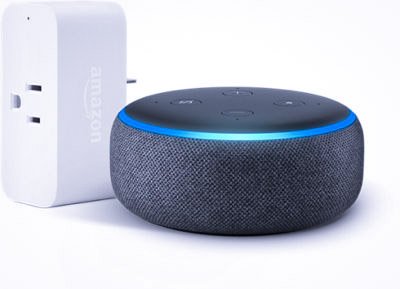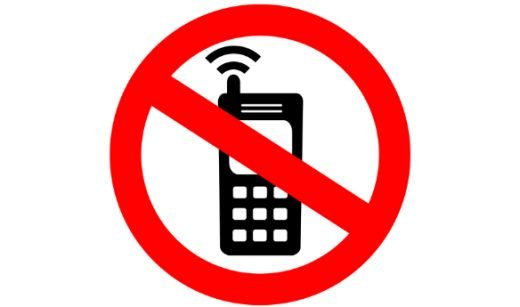In today’s fast-paced business environment, staying competitive and maximizing productivity is crucial. One key aspect that can significantly contribute to achieving these goals is software use monitoring. Software use monitoring involves tracking and analyzing how employees utilize various software applications and tools within an organization. By gaining insights into software usage patterns, businesses can unlock efficiency and enhance accountability throughout their operations.
Benefits of software use monitoring for businesses
Increased efficiency through software use monitoring
Efficiency is the backbone of any successful business. With software use monitoring, organizations can identify inefficiencies and streamline their operations. By analyzing software usage data, businesses can identify redundant or underutilized applications, allowing them to optimize their software investments. Furthermore, by monitoring how employees interact with software tools, organizations can identify training needs and provide targeted training programs to enhance productivity.
Software use monitoring also enables businesses to identify bottlenecks and optimize workflows. By analyzing data on application usage, organizations can identify areas where employees spend excessive time or encounter frequent errors. Armed with this information, businesses can make informed decisions to improve processes, automate tasks, or provide additional resources to boost efficiency.
Also Read: What are the 5 Free OCR Tools for Image-to-Text Conversion in 2022?
Enhancing accountability with software use monitoring
Accountability is essential for fostering a culture of responsibility and driving performance within an organization. Software use monitoring enables businesses to track employee activities and ensure compliance with company policies. By monitoring software usage, organizations can identify any misuse or unauthorized access to sensitive information. This not only helps safeguard company data but also promotes a sense of accountability among employees.
Moreover, software use monitoring allows businesses to track time spent on different applications and projects. This data can be used to accurately measure employee productivity, set realistic goals, and reward high-performing individuals or teams. By creating a transparent and accountable work environment, organizations can motivate their employees and drive performance to new heights.
Case studies showcasing the impact of software use monitoring
To truly understand the benefits of software use monitoring, let’s take a look at a couple of case studies that highlight its impact on businesses.
Case Study 1: Company X
Company X, a medium-sized manufacturing firm, implemented software use monitoring to gain insights into their employees’ software usage patterns. Through monitoring, they discovered that a significant portion of their workforce was spending excessive time on non-work-related applications. Armed with this information, Company X implemented a policy to restrict personal application usage during work hours. As a result, productivity increased by 20%, and employees became more focused and accountable.
Case Study 2: Company Y
Company Y, a global technology company, used software use monitoring to optimize their software investments. By analyzing their software usage data, they discovered that some applications were heavily underutilized, while others were overused. They made strategic decisions to reallocate licenses and invest in training programs to ensure maximum utilization of their software tools. This resulted in significant cost savings and increased efficiency across the organization.
These case studies demonstrate how software use monitoring can have a tangible impact on businesses, driving efficiency, and enhancing accountability.
How to implement software use monitoring in your organization
Implementing software use monitoring in your organization requires careful planning and execution. Here are some steps to follow to ensure a successful implementation:
- Identify goals and objectives: Clearly define what you aim to achieve through software use monitoring. Whether it’s improving efficiency, enhancing accountability, or optimizing software investments, having clear goals will guide your implementation strategy.
- Choose the right software: Select a software use monitoring tool that aligns with your organization’s needs and requirements. Look for features such as real-time monitoring, detailed usage analytics, and customizable reporting.
- Communicate with employees: Transparency is key when implementing software use monitoring. Communicate the purpose and benefits of monitoring to your employees, emphasizing that it is not meant to invade their privacy but to enhance productivity and accountability.
- Establish policies and guidelines: Develop clear policies and guidelines regarding software usage. Clearly communicate expectations, acceptable usage, and consequences for misuse or non-compliance.
- Train employees: Provide training sessions to educate employees on the benefits and proper use of software applications. Ensure they understand how monitoring will be conducted and how it will contribute to their personal and professional growth.
- Regularly review and analyze data: Continuously monitor and analyze software usage data to identify areas for improvement. Regularly review reports and make data-driven decisions to optimize software investments and streamline workflows.
Also read: How to Improve Wireless Network: WIFI Signal Range and Strength
Best practices for software use monitoring
To ensure effective software use monitoring, it’s important to follow best practices. Here are a few recommendations:
- Respect privacy: Strive to strike a balance between monitoring and respecting employee privacy. Avoid capturing personal data unrelated to work and ensure that monitoring is conducted within legal and ethical boundaries.
- Focus on productivity: Use software use monitoring as a tool to drive productivity and performance, rather than as a means of surveillance. Emphasize the benefits of monitoring in terms of optimizing workflows and improving efficiency.
- Regularly communicate results: Share findings and insights from software use monitoring with employees. Regularly communicate the positive impact it has on the organization, highlighting success stories and areas of improvement.
- Continuously adapt: The software landscape is constantly evolving, and so should your monitoring approach. Stay up to date with the latest technologies and tools, and be ready to adapt your monitoring strategy accordingly.
Tools and software for effective software use monitoring
When it comes to software use monitoring, there are various tools and software available in the market. Here are a few popular options:
- ActivTrak: ActivTrak provides comprehensive software use monitoring, allowing organizations to track application usage, websites visited, and even capture screenshots. It offers real-time monitoring and detailed analytics to help businesses optimize productivity.
- Teramind: Teramind is a powerful employee monitoring and productivity tracking solution. It offers features such as keystroke logging, application usage tracking, and user behavior analytics.
- Time Doctor: Time Doctor focuses on time tracking and productivity monitoring. It allows businesses to track time spent on different applications and projects, helping to identify areas for improvement.
Common challenges and how to overcome them in software use monitoring
Implementing software use monitoring may come with its fair share of challenges. Here are some common challenges and strategies to overcome them:
- Resistance from employees: Some employees may perceive software use monitoring as an invasion of their privacy. To address this, clearly communicate the purpose and benefits of monitoring and address any concerns or misconceptions.
- Legal and ethical considerations: Ensure that your software use monitoring practices comply with local laws and regulations. Consult legal experts if needed to ensure that you are operating within the boundaries of privacy laws.
- Data overload: With vast amounts of data being generated, it can be overwhelming to analyze and make sense of it all. Implement proper data analysis techniques and invest in tools that provide insightful reports and visualizations.
Conclusion: Embracing software use monitoring for business success
In an increasingly digitized world, software use monitoring has become a valuable tool for businesses to unlock efficiency and enhance accountability. By tracking and analyzing software usage, organizations can optimize their investments, streamline workflows, and drive productivity. Case studies have shown the tangible impact of software use monitoring, and implementing it in your organization can lead to significant benefits.
Remember to follow best practices, choose the right tools, and communicate openly with your employees throughout the implementation process. Overcoming challenges and adapting to the evolving software landscape will ensure that your software use monitoring efforts yield fruitful results. Embrace software use monitoring as a strategic initiative, and watch your business thrive in the age of digital transformation.






![Duck Life Unblocked Game For School No Flash [911] – Play For Free Duck Life unblocked](https://nexkinproblog.com/wp-content/uploads/2022/11/Screenshot_20221104-213716.png)
![Gunblood Unblocked Game For School No Flash [WTF] – Play For Free Gunblood unblocked](https://nexkinproblog.com/wp-content/uploads/2022/11/PSX_20221104_190057.jpg)
![Raft Wars 2 Unblocked Game for school No Flash [WTF] – Play For Free Raft Wars 2 unblocked](https://nexkinproblog.com/wp-content/uploads/2022/11/PSX_20221104_173142.jpg)